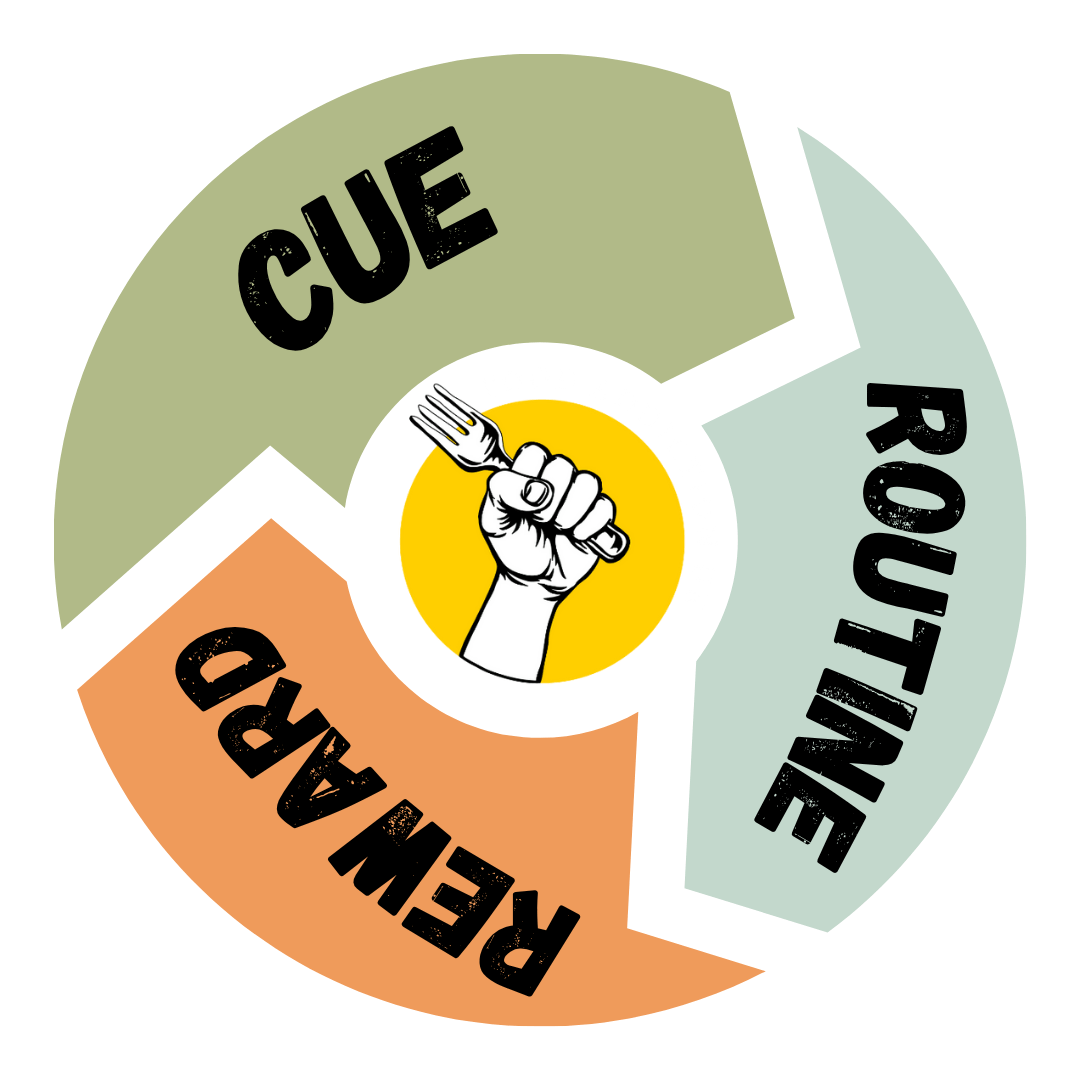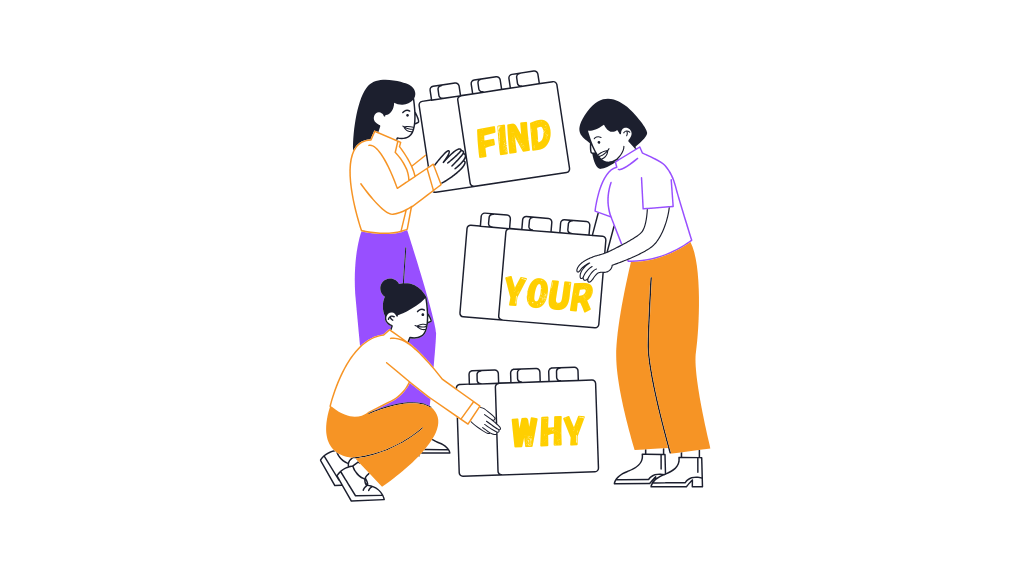The Science of Habit Formation and Breaking
When you’re in recovery from food addiction, it can feel like you’re constantly swimming upstream against a lifetime of automatic behaviours. Maybe it’s the nightly snack you reach for without thinking, or the way stress seems to send you straight to the fridge. These aren’t just quirks, they’re habits. And the good news is: Habits can be changed.
But how? That’s where the science comes in.
Understanding why habits form, how they become so powerful, and what it takes to break them gives you the tools to move forward with compassion, not shame.
What Is A Habit?
At its core, a habit is a behaviour that has become automatic, your brain’s way of being efficient. Instead of consciously deciding each time whether or not to eat something, your brain uses past experience to decide for you. This is helpful when brushing your teeth or locking the front door, but when it comes to emotional eating or food addiction, habits can keep us stuck in painful loops.
The Habit Loop

Cue – Routine – Reward
Habits follow a predictable structure:
Cue: A trigger that tells your brain to go into autopilot (e.g. boredom, stress, walking into the kitchen)
Routine: The behaviour itself (e.g. reaching for snacks)
Reward: The benefit you get (e.g. temporary comfort, distraction, dopamine hit)
Over time, your brain starts to crave the reward, and the habit strengthens, even if the reward is short-lived or followed by guilt.
How Long Does It Take to Break a Habit?
You’ve probably heard “it takes 21 days to form a habit” - but that’s a myth. In reality, it depends on the person, the complexity of the behaviour, and how often it’s repeated. Research suggests that it takes on average 66 days to form a new habit, and that’s with daily repetition. But breaking a habit? That’s often more about replacing than removing. You don’t just delete a neural pathway, you build a new one, and that takes time, consistency, and most of all, self-compassion.
Why Food Habits Are Especially Powerful
Food is deeply tied to survival, memory, emotion, and even identity. We eat to soothe, to celebrate, to live. So when food becomes a coping mechanism, it’s layered with meaning. In recovery, you’re not just trying to break a habit, you’re often trying to rewire years (or decades) of emotional associations. That’s no small thing. But it is possible.
5 Steps to Break Habits and Form Healthier Ones
1. Identify Your Cues
Start by observing what triggers your unwanted eating habits. Is it time of day? A feeling? A location? Write it down without judgement.
Example: “I always eat crisps while watching TV at night”
Cue: Evening, boredom, television

2. Pause and Create Space
You don’t have to stop the habit immediately, just interrupt it. Pause for 60 seconds. Take three deep breaths. Step outside. This builds a gap between cue and routine.
“I’m noticing the craving, but I don’t have to act on it right now”

3. Replace the Routine with Something Kind
Rather than just trying to stop, offer your brain something new. Craving comfort? Try a warm drink, a favourite playlist, or a quick stretch. Consistency matters more than perfection here.

4. Focus on the Reward
Give your brain a new kind of satisfaction, one that doesn’t come with guilt. Ask:
“What will help me feel safe, soothed, or satisfied right now?
Over time, your brain will learn to associate your new routine with the same (or better) emotional reward.

5. Celebrate Tiny Wins
Neuroplasticity - your brain's ability to rewire - thrives on positive reinforcement. Every time you make a new choice, acknowledge it.
“I paused. That matters.”
“I reached out instead of reaching for food. That’s growth.”
The more you recognise these shifts, the stronger they become.

Be Patient - and Kind to Your Brain
Remember: Your brain built these habits to protect you at some point. The fact that they’re no longer serving you doesn’t mean you’re broken, it means you’re evolving. Recovery isn’t about control or willpower. It’s about curiosity, compassion and commitment. You are not your habits, you are the person who is learning to choose differently.
Science-Backed Tips to Support Your Habit Change
Use visual reminders - Sticky notes on the fridge, gentle phone alarms, or printed affirmations can keep new goals front of mind.
Track your progress - Even just a quick daily note: “Did I pause today? Did I try something new?” This builds awareness and momentum.
Repeat, repeat, repeat - The more often you repeat a new behaviour, especially in the same context, the stronger the new habit becomes.
Get support - You don’t have to do this alone, community matters. Whether it’s a recovery group, a friend, or our team at Food Addiction UK, support helps.
Final Thoughts
Breaking free from food addiction is about rewiring the brain, not punishing yourself for the past. The science is clear: you can change. It just takes time, tools, and trust in your process. So the next time you catch yourself falling into an old pattern, don’t ask “What’s wrong with me?” ask: “What is this habit trying to give me, and how can I meet that need in a kinder way?”
Need Support?
Join our community or reach out to talk with others who get it.
You don’t have to do this alone.
Copyright © 2025 · Food Addiction UK


